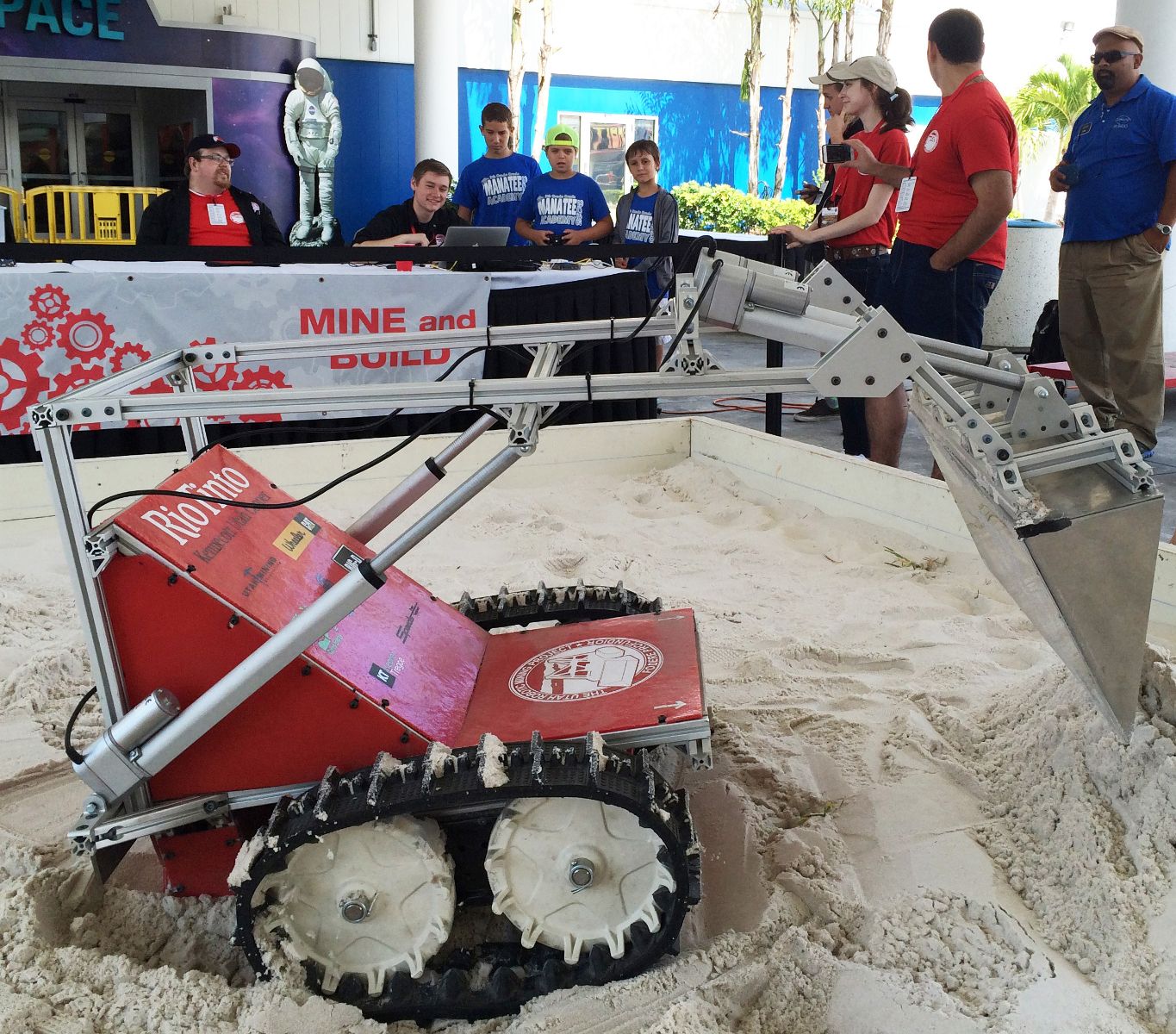A senior at the University of Utah, Sanders was a member of the Utah Robotic Mining Project. The fledgling group of 14 mining, mechanical, computer, electrical and materials engineering students was determined to compete in the 2015 NASA Robotic Mining Competition. The goal of the contest: design, build and test a mining robot capable of handling excavation work on Mars. Not just in simulation—the teams designed and built prototype mining robots and then operated them in a controlled, Mars-like environment. The technology presented by the student teams may actually be used for future NASA missions.
The Utah team’s attempt to compete two years earlier had ended before it began. While there was strong enthusiasm among team members, a lack of expertise and team leadership left the project grounded and the team disbanded. Sanders notes, “all we ended up with were drawings on a white board and some t-shirts.”
But in 2015, Sanders knew he had an ace in his back pocket: Kepner-Tregoe’s proven framework for project management success. After taking a KT Project Management workshop during a school break, he recognized how the KT Project Management structure could address some of the difficulties the team had experienced. Sanders shared his idea with team captain, Kevin Chapin. They purchased the Kepner-Tregoe book, The Rational Project Manager: A Thinking Team’s Guide to Getting Work Done and began studying how to put the PM process into practice.
View the video of University of Utah’s robot on competition day!
Back to the Future
Kepner-Tregoe and NASA have a long history. NASA staff at Mission Control used KT problem solving methods during the Apollo missions nearly 50 years ago, and were credited with helping bring the astronauts of Apollo 13 safely back to earth. Now, Kepner-Tregoe was embraced by a new generation on a project focused beyond the Moon to the surface of Mars.
“The core strength of Kepner-Tregoe’s Project Management process is its timeless applicability to any situation, environment or project,” said Debra Evans, KT Practice Leader. “We were thrilled to see the Kepner-Tregoe method being applied in a university setting for the Utah Robotic Mining Project.”
Preparing to Launch
Over the next few months, all team decisions were made using Kepner-Tregoe’s Decision Analysis (DA) process. DA allowed the team to use weighted decision matrices to optimize the robot’s design. “It allowed us to identify and choose solutions quantitatively versus emotionally,” said Sanders. “Decisions were made quickly and efficiently and there was little team disagreement thanks to having a unified, agreed-upon process.” One major design change was to move from a bucket-conveyor system for collecting material to a front-load bucket system. This proved to be key to their success.
Before the team headed out to the Cape Kennedy competition, they used KT’s Potential Problem Analysis to identify possible issues that could arise during the competition, create contingency plans, and compile a list of critical spare parts. They wanted to be ready for anything.
Competition Day
The University of Utah’s inaugural appearance at the NASA Robotic Mining Competition far exceeded expectations. The Utah team placed second in moving the most material, out of 50 competing universities—many of whom were veteran competitors.—and the robot drew complimentary remarks from other participants and competition judges. Cheering them on from afar, the team’s contacts at Kepner-Tregoe watched the live stream of the competition and shared videos and photos with KT colleagues and on social media.
Ultimately, the University of Utah team had an outstanding finish. Placing third in the competition, they were edged out of second only because their robot was designed to operate by remote control. First and second place finishers were programmed to work autonomously—a situation they intend to remedy next year. It was an amazing accomplishment, especially for a first-year competitor.
A New Frontier
For next year’s competition the team is determined to design an autonomous robot and take the top prize, with the Kepner-Tregoe PM process guiding the way. The Utah Robotic Mining Program has gained new recognition from the University of Utah and additional faculty support for the 2016 competition.
While Clayton Sanders has graduated from The University of Utah and will not be participating in the NASA Robotic Mining Competition next year, he plans to take the knowledge and processes learned through the Kepner-Tregoe process with him into his career.
“The Kepner-Tregoe method is a proven model. No matter where I go in my career, the Kepner-Tregoe process will always go with me,” added Sanders.
View the video of University of Utah’s robot on competition day!







